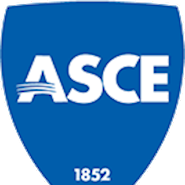Henry Petroski, a brilliant civil engineer, wordsmith, and educator with a great appreciation for history who achieved fame for his many engaging, enjoyable books on engineering and facets of it, has died. He was 81.
Petroski, Ph.D., P.E., Dist.M.ASCE, was known as the “poet laureate of technology” at Duke University, where he was a longtime professor of engineering and history. Questioning the axiom “form follows function,” he would instead claim that form follows failure.
His writings are as rich in historical perspective as they are prodigious. Petroski’s first and most acclaimed book, To Engineer Is Human: The Role of Failure in Successful Design, from 1985, answered in straightforward language the fundamental question, “What is engineering?” His answer: Engineering is design, and design is about avoiding failure, which is nonetheless an essential part of the process. The book focused on large structures like bridges and buildings, but Petroski believed the concept could be applied to small things such as paper clips, zippers, and pencils.
His third book, The Pencil: A History of Design and Circumstance, and fourth book, The Evolution of Useful Things: How Everyday Artifacts - From Forks and Pins to Paper Clips and Zippers - Came to Be as They Are, do just that. Other books included Beyond Engineering: Essays and Other Attempts to Figure without Equations (1986) and his most recent, Force: What It Means to Push and Pull, Slip and Grip, Start and Stop (2022).
Petroski turned an early curiosity about the origins of the structures and objects around him into a bachelor’s degree in mechanical engineering from Manhattan College in 1963. He then quickly earned master’s and doctoral degrees in theoretical and applied mechanics from the University of Illinois at Urbana-Champaign.
But alongside technical adeptness, he discovered a talent for organization around the written word. Prompted by his school’s literary magazine, he began writing poems and short essays as a way to relax at night. It was his joy, for example, to express ideas in the 14 lines of prescribed patterns of meter and rhyme demanded by sonnets.
After graduate school, Petroski taught engineering at the University of Texas at Austin until 1974 and then joined Argonne National Laboratory as a leader of its research and development efforts in fracture mechanics. It was during his time at Argonne that he began publishing pithy 600- to 700-word pieces about science and technology policy in MIT Technology Review, as well as op-eds in The New York Times.
“I came to Duke University because the people who interviewed me were actually interested in my nontechnical publications,” said Petroski, who joined the school’s faculty as a professor of civil and environmental engineering and history in 1980. “They saw them as a plus and not a dilution of my technical work.”
Current Pratt School of Engineering Dean Jerome Lynch spoke about this perfect match: “Henry exemplified Duke’s unique ability to beautifully integrate traditions … to unearth deep insights into how engineering has transformed our world for the better.”
After critical acclaim and commercial success came a prolific writing career featuring 20 general interest books and countless general-interest articles and essays for top national magazines and newspapers. He also wrote regular columns for American Scientist and ASEE Prism.
Bernie Dennis, who worked with Petroski for many years, said, “Under his leadership, the ASCE History & Heritage Committee recognized many Historic Civil Engineering Landmarks, each unique with its own inspiring story. We shared many memorable adventures including a Stephenson Symposium and tour in the UK, the Hoover Dam 75th Anniversary …
“As an educator he introduced his students to the human side of engineering as a profession and attitude toward life. … His books provide uniqueinsights into the value of the pencil, life skills from a simple paper route, complexities of supporting library books, and the forensics of engineering disasters.”
Named Duke’s Vesic Professor of Civil and Environmental Engineering in 1993, Petroski pursued research in structural engineering and design that was sponsored by the Corps of Engineers, the NSF, the Alfred P. Sloan Foundation, and other organizations. He published more than 75 refereed journal articles.
From 2004 through 2012, Petroski held a presidential appointment as a member of the U.S. Nuclear Waste Technical Review Board. He was a fellow of the American Society of Mechanical Engineers and the Institution of Engineers of Ireland and was an elected member of the American Academy of Arts and Sciences, the American Philosophical Society, and the U.S. National Academy of Engineering.
Petroski held fellowships from several notable foundations and endowments. Among his other honors were the Ralph Coats Roe Medal from ASME, the Washington Award from the Western Society of Engineers, and the Civil Engineering History and Heritage Award from ASCE. He also received honorary degrees from Clarkson University and Trinity College, among others.



